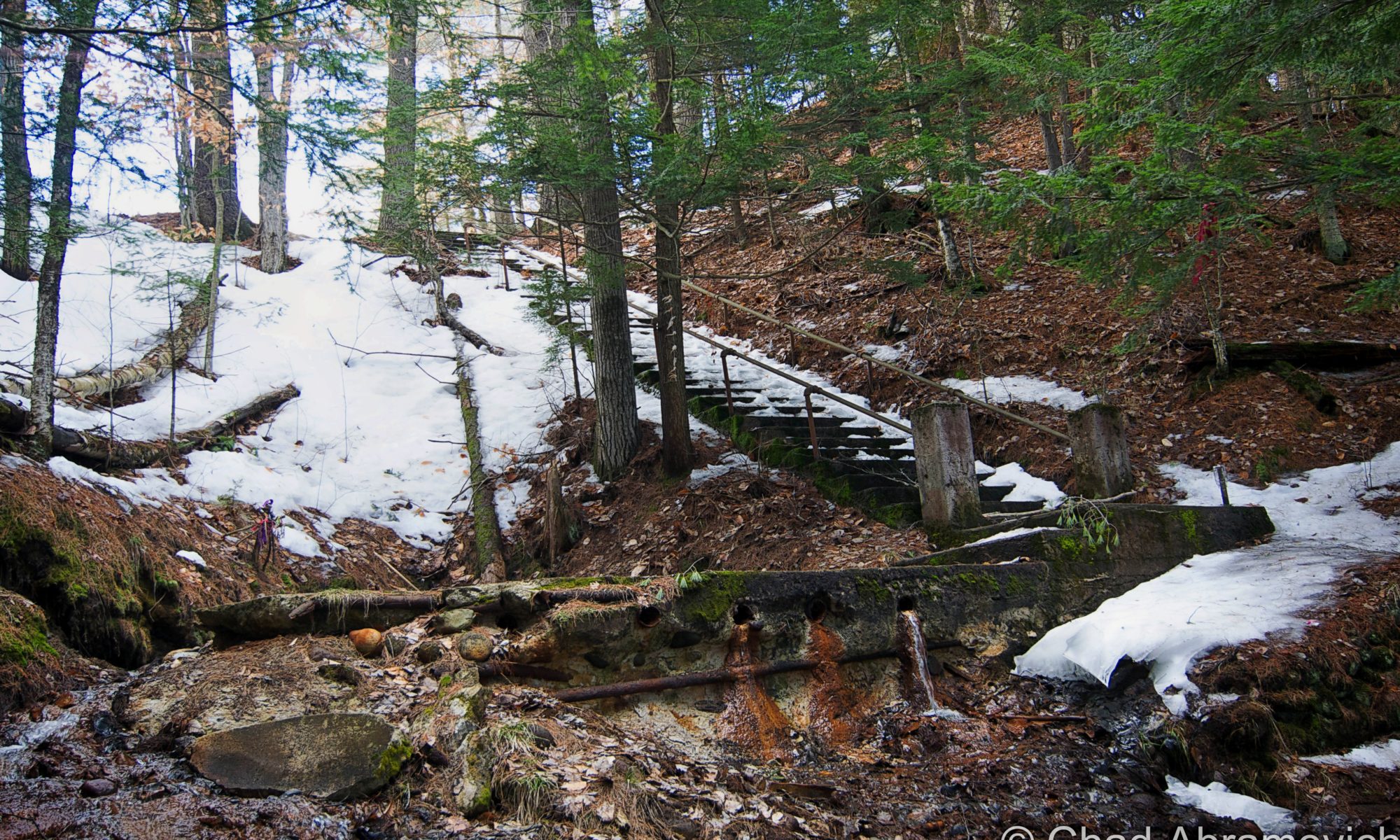It felt great to be outside last weekend without my Carhartt and winter gear! 64 degrees on a February Saturday meant me and an exploring compadre set out for an off the beaten path oddity hunt – one that had tantalizing fragments of being a unique natural wonder saturated in mystery, history and allegedly once the site of some sort of spitefully destructive curse.
Well, we were on our way. For this trip, we headed up towards one of the most remote areas of the most remote area of Vermont.
Vermonters refer to the northeastern most part of their state as The Northeast Kingdom. Its regional moniker was said to be inspired by a 1949 speech by US Senator George Aiken, who purportedly said something like; “Man, this is such beautiful country up here, it should be called the Northeast Kingdom”. But, according to an edition of LIFE from 1977, Aiken, from the kingdom town of Irasburg, used the term facetiously when he referred to the state’s most wretchedly poor corner with exorbitant heating prices and mangy looking forests as “my Northeast Kingdom”.
Only one of those two anecdotes is better for tourism.
The region has even been recognized by National Geographic as one of the first geotourism destinations, which coincidentally is kinda relevant to this blog entry.
I love the NEK. I have good memories up that way. I remember my dad taking me fly fishing on the Barton and Willoughby rivers as a young kid and handing down his wisdom, pointing out small towns from the driver’s seat and sharing old stories. Later in my years, I’d attend Lyndon State College in Lyndonville and go out backroading on weekends.
The kingdom might be Vermont’s most fabled and mythicized realm, and that’s largely due to it being so extraordinarily wild. It’s certainly always had a different feel to it than the rest of the state. Driving up Route 2, it was almost a 3-hour trip to a part of the state with no direct routes and lots of bad road tar crossing the area.
But the journey, to me anyways, is always half the fun. We began to pass towns with increasingly thinning populations, before turning north onto deserted state route 102, which serpentines along the mighty Connecticut River and brings us deep into unpopulated timberlands and destitute little towns that are now smaller than their census counts a century ago.
There was the Essex County seat of Guildhall, which was sparsely more than a collection of old wood-framed buildings around the town green. Their town hall was actually named “The Guild Hall”, and I appreciated the cleverness. Further north, there was tinier Maidstone, where the most remote state park in Vermont is. Beyond that was our destination town of Brunswick, which was little more than a vacant one room school house, a town office building and 2 houses before returning back to ugly sand-banked woodlands and acres that dragged together.
Those woods are where one of Vermont’s earliest oddity tales came out of a few centuries ago – when early settlers began uttering stories of a strange critter, that began reputedly terrorizing a broad area stretching from Morgan at the border, down to Brunswick, Lemington, Maidstone and westwards towards Victory sometime in the early 1800s.
This canny inhabitant is in the elusive category of Vermont’s endemics and left folks baffled to know that they were sharing the state with it.
It was said to be some sort of awesome bear with abnormal intelligence and human-like behaviors. The Indians knew of this smart bear too, and called it Wejuk, which translated to ‘Wet Skin’. Samuel de Champlain might have even seen one of its kin as it threw pine cones at his crew while sailing near Missisquoi Bay.
White settlers took to similarly calling it “Old Slipperyskin”, due to the thing’s uncanny ability to avoid being captured. It could literally ‘slip’ out of any trap set for it.
Other defining characteristics were It was said to walk upright like a man, had a mean disposition, and would even seek out revenge on those it had a grudge against. It could rip out fences, frighten livestock, flatten cornfields with trees, or use stones to throw at machinery and fill up sap buckets. Most impressively, some guessed the wily creature had a way of backtracking in its own prints, confusing trackers with a trail that abruptly ended. A few hunting parties were put together around the region, and all failed at shooting the underestimated antagonist.
It was prevalent enough in kingdom culture where the bear would enter local historical records, such as the History of Lemington written by Marion M. Daley, was mentioned in quite a few local newspapers through the 19th century, and later re-discovered by Vermont author and folklorist Joseph Citro in his book Green Mountain Ghosts, Ghouls, and Unsolved Mysteries and given a mention in The Northland Journal. The Norwich Inn also named one of their IPA’s after it, which I haven’t tried but would like to.
Even former Vermont governor Jonas Galusha attempted to hunt it down in 1815, when himself and a hunting party entered the Maidstone woods where it was last sighted. But instead, they were fearfully chased out of the woods by the enigmatic monster when the governor finally encountered it.
Though we really have no idea what Old Slipperyskin actually was, the story has enormous charm and is a fun one to tell, even if it might be nothing more than historical deformity.
But the fundamental truths remain; it resembled a bear but walked like a human, it seemed to be highly intelligent, and it appeared to be hostile. Maybe it was provoked because people were starting to intrude on what for centuries had been its own dominion, making it vindictive and hostile when encountered?
Where the bear came from, what it actually was, and where it ultimately vanished too afterward still all remain in the realm of enigma and largely forgotten about. I wonder if people still spot something comparable nowadays?
Brunswick Springs
Believe it or not, Robert Ripley once addressed the Brunswick Springs as “the eighth wonder of the world“, which only adds to its mystique, because they’re mostly in the haze of esoterica and are largely unremembered by folks today.
But it’s easy to understand the curiosity about this place because it’s a true geographical anomaly. Here, 6 springs with completely different mineral contents, all bubble forth from a single knoll as close together as the spigots on a soda fountain. They flow under the crest of a steep hill before all merging together in an – at the time of my visit – orange, gunky, iron oxidized spillway draining all together down into the Connecticut River below.
An old, helpfully labeled photograph of the springs lists their individual mineral contents from left to right; Iron, Calcium, Magnesium, White Sulfer, Bromide, and if you’re really intrepid, Arsenic.
The deterioration of the 19th century attempts to exploit the springs was also very evident. The modern “facelift” they were given consisted of channeling them through convenient pipes and building a concrete landing above for easy access. But when I visited, only 4 of the 6 springs were still encased through now rusted pipes, the infrastructure of the two most leftward ones seemed to have completely deteriorated, once again returning them to somewhat more of a natural environment.
Medicine Waters
To the Native Americans, the springs were, and still are, considered magical healing waters on sacred, legend crowded terrain.
The Abenaki used to make long-distance treks here to benefit from the “medicine waters of the great spirit”. But, they only visited during the hours of daylight.
Not only was this seen as a spiritual place, it also had a metaphorical dark side after the literal dark would crawl up over the north country. Part of the land’s divine designation meant the Abenaki believed there was a supernatural balance here, an arrangement of light and dark forces – perhaps symbiotic. Something was said to reside and lurk on those Connecticut River banks, both respected and wisely avoided.
Near the springs is a tranquil waterbody that’s called Silver Lake. You won’t find it labeled on any atlases though. Abenaki lore says that it’s bottomless and that Indian spirits can be seen around the shore.
Other, more wishful lore suggests that the doomed Roger’s Rangers party – while fleeing from their horrific raid/massacre on a Saint Francis Indian village in Quebec – might have stashed some of their plundered treasure near the vicinity, and never made their anticipated return to grab it because they eventually lost their way and forsakenly perished in the frozen wilderness.
Who knows, there may still be a priceless silver statue of the Madonna somewhere in the wilderness of the northeast kingdom or the White Mountains, waiting to be discovered…
A few troubled souls used the forests near the springs as a place to kill themselves in more recent years, and an infant was once found strangled to death close by.
A more gloomy account documented by VPR was described to them by an Abenaki descendant from Swanton, who found the body of an old logger who just got sick of living, tied a rope both around a tree limb and his neck, and sat down.
No doubt the Brunswick Springs can be a spooky place, but what about the real draw here?
The springs and their supposed natural healing powers were revered for centuries, but their first documented account in the public sphere happened in 1748, when Abenakis allegedly lead an injured British soldier to the springs all the way from Lake Memphremagog. The soldier had a badly wounded arm that was almost lifeless, and he worried about having to get it amputated or losing it to infection – both outcomes would most likely involve the dreadful medical procedure of removing the appendage with a surgeon’s saw without anesthesia.
Somehow, through an undocumented ritual, a shaman worked those magic springs over his arm, and miraculously, life returned to the injured limb! As far as I know, this seems to be the best-documented case of the waters and their vigors.
The Abenaki avow that you can treat just about anything here – these 6 springs are all the prescriptions you’ll ever need. It just depends on how you mix them. That arcane wisdom, however, seems to be covert hum.
There isn’t exactly tons of factual evidence that claims the validity of this place though. Apparently, a state geologist from New Jersey once tested the spring waters and observed that the mineral contents weren’t all that different from one another, just a lot of sulfur dioxide. But, former Vermont state geologist Dr. H. A. Cuttings had a different opinion and likened them to the chalybeate waters in Germany, which were sought after to combat skin diseases.
Even today, some denizens from local towns still make trips to the property and argue that it’s partially responsible for their longevity. They don’t need scientific confirmation. As is often the case with legends and mythology, not everything relies on evidence.
Brunswick resident Bill Boudle told Bill Alexander of Vermonter.com, that he’s been drinking the waters there since 1945. After he injured his back working on the railroad, no doctors or chiropractors were able to give him any relief, until he started consuming the medicine waters. “I’m telling you that stuff will heal. A lot of people use it,” Boudle told Mr. Alexander.
Beverly Kettle from across the river in North Strafford, New Hampshire, recalled an old man living in a cabin near the springs when she was a child. The man would regularly drink the waters and lived to the old age of 90 – and said that his ‘secret’ was those trips down to them.
So is there truth to any of this? What about that British soldier and his personal wondrous phenomenon here? If these waters are so miraculous, why are they so obscure today?
Curses!
We’ll have to take a look at some vague and bewildering history that progressed over the intervening centuries to get anything that may come close to being an answer here.
Ironically, the troubles started when that soldier came back to what is now Brunswick after the French and Indian war. He was so taken by his experience that he wanted to bottle and enterprise from the waters. The Abenaki weren’t having it, firmly objecting to the preposterous sale of something the great spirit gives for free. But the word was already out and would take off like a contagion shotgun blast.
Brunswick was charted in 1761 and as it is now, has never been very populated. But settlers did eventually trickle up into Vermont’s last frontier, just very slowly.
Anglo and Abenaki began to find themselves in a conflicted relationship over the local wonder. At first, everyone took freely of the waters. But soon, that notion of free sharing began to corrode when early American entrepreneurs began to eye them as agents of free enterprise.
Businessmen made a variety of offers and bargains, but the Native Americans held firm to their decision not to sell. Because being covetous brings out the worst in people, attempted negotiations became hostile, and two Indians would somehow be killed as a result.
The grief-stricken mother of one of the dead, who also happened to be a shaman or sorceress depending on the storyteller, retaliated by architecting a curse that would prove to be long remembered; “Any use of the waters of the great spirit for profit will never prosper“
Maybe the great spirit did spray a curse on those pine banks that day. Strangely enough, though it was slow coming, that’s exactly what happened.
Fire Water & Changing Times
White settlers began replacing Native Americans, who subsequently began to vanish from the land, and the springs’ reputation continued to grow.
In 1790, the first boarding house to offer accommodations and easy (uncharged) access to those marvelous waters was built nearby by a Major French. That number grew to 12 operating on both sides of the Connecticut River by 1820.
By 1845, people from as far away as coastal Maine were making the arduous journey to sample Vermont’s now celebrated healing springs – which among other things, were advertised as being able to treat a murderers row of maladies that included; inanimate limbs, vitality, kidney problems, consumption, and rheumatism.
The railroads soon followed, which would change Vermont’s economics and landscape forever, and make trips to the springs practically effortless. A train would deposit health seekers off at a depot in North Strafford, New Hampshire, where they would board a carriage that would bring them across the Connecticut River over to Brunswick.
Charles Bailey would erect the first hotel near the springs in 1860, which he then sold shortly after to local dentist D.C. Rowell. Mr. Rowell named his new endeavor the Brunswick Springs House, and would also be the first person in the history of the springs to sell them when he later opened a bottling plant. If there was a curse, maybe this was its first preternatural warning shot, when In 1894, The Brunswick Springs House burned to the ground.
Not to be deterred, the dentist rebuilt somewhere on the bluff between the lake and the river, this time as The Pine Crest Lodge. After that, history seems to have lost track of him until his death in 1910. The lodge would later collapse into the river after the foundation finally gave way due to erosion and changing water patterns and the springs were put back on the market and were ogled with temptation.
John Hutchins from across the river in North Strafford saw the springs as a sure economic victory. And why not? Hutchins was already a financially well off man, and that was partially ensured by a characteristic quality of early twentieth century businessmen; avarice.
His appetite for vanity and profit lead to a multifarious portfolio of accolades. He was a successful druggist, real estate agent, mortician, and expanded upon all that by buying up huge tracts of north country woodland and establishing himself as a lumber baron. But none of that seemed to be enough. To his vexation, Mr. Hutchins was never able to make any headway in politics, so he might have figured that the Brunswick Springs would be a jackpot of an investment to at least heighten his celebrity.
The watery emanates and their innate constituents would be a logical move. They’d merge together and extend two of his businesses; pharmaceuticals, and real estate. All over the world, grand resorts were emerging and profiting from their peculiar tasting waters, and he planned to make Vermont the next development.
If there was any talk of a “curse” at all, he didn’t let that deter his purchase, because his ambitions were far more significant than a mere spook story. Being able to sell “nature’s magic elixir” would surely set him apart from anyone he’d be competing with – especially now after no less of an authority than charismatic huckster Robert Ripley supplying national awareness.
It seemed he had a real skill of turning what he could see into business, and what a sight the Brunswick Springs were, and still are.
From the springs themselves, the view descends down towards the Connecticut River, and beyond that, the rugged White Mountains. Up the hill, a placid and tiny lake that backed up against the abraded granite hills of the kingdom. It was an entrepreneurial dream come true. So, Hutchins bought the place and chose a new spot to build a brand new resort hotel, with the waters as part of the levied package. On September 19th, 1929, the hotel burned down – gone before it even had its grand opening.
But Hutchins wasn’t the superstitious type, and he surely wasn’t going to give up something that had the potential to be so profitable, so he rebuilt. Only this time, he went all out.


He hired a Bloomfield contractor sort of ironically named Harry Savage, who drove his crew all through the long winter months to re-build. Savage was a man of his word, and the hotel was completed and ready to open its doors by the spring.
At the time, Hutchin’s new hotel would have been a remarkable rarity in northern Vermont. It was a dignified four and a half story construction with 60 rooms featuring plate glass windows with springs water piped into 30 of them.
Reservations poured in and anticipation for opening day was mounting.
But, on May 15th, 1930 – just a month before the hotel was set to open for business, the night watchman spotted smoke billowing from a storage room. By then it was too late. The phone lines were already superheated and snapped – cutting off communication while the building went down in fiery wreck.
I’m not sure just how much talk of the curse actually circulated (if any), and if John did know about it, how much he paid it any mind.
If he acknowledged of it, he certainly didn’t heed its ruinous insurance, despite losing two hotels in two years. Again, the willful Mr. Hutchins hired contractor Savage, and his crews worked through the winter to build another retreat. By spring of 1931, the new hotel was ready for business – advertised as a “modern city hotel nestling between the White and Green Mountains”
A colorful brochure was printed up (see scans 1,2 & 3) and widely distributed, advertising the “Medicine Waters of The Great Spirit” and their Native American mystique, which was bolstered by a thematic design scheme of woven patterns and a kneeling brave partaking in the magic fountain, which Hutchins still planned on charging for.
It was larger than its predecessor, featuring 100 rooms with Brunswick Springs water pumped into every one of them. Two brand new Packard limousines were also purchased to transport guests to and from the railroad depot.
On April 23rd, 1931, John C. Hutchin’s third and final hotel was struck down by inexplicable inferno. Maybe by now, he became a believer, because this time, he never tried to rebuild, and in the years that followed, neither has anyone else.
It seems the great spirit could finally stop counting up the days of vultures driving for temptations and their lust for glory. In Brunswick, anyways.
What really happened here? Historical records are full of fires murdering hotels. Surely this was just an odd chain of freak accidents, right? Well, one of Hutchin’s blazes was ultimately linked to the combustion of paint fumes in a storage room, but the other two still remain undiscovered.
It’s plausible that because of Hutchin’s hubris, those higher powers might not have been quite finished with the already stricken gentleman. Not long after the demise of his last hotel, his health rapidly declined until he passed away on March 22, 1938, at age 74.
Scouting
The acrid smell of sulfur told us we were close. That was a huge boon, actually, because I had no idea exactly where the springs were. Just that they were on an embankment above the Connecticut.
They and the surrounding lands have since returned back under Abenaki ownership, who formed a non-profit organization about a decade ago to purchase it with the help of the Vermont Land Trust. Now, they legally prevent any sort of development near the springs.
The springs were really the only reason to ever recognize Brunswick, and because of that, there’s an almost unnoticeable cartographical weirdness here. Old maps label the area as ‘Brunswick Springs’ instead of Brunswick, and even today, Google maps still tags the ‘village center’ as Brunswick Springs, regardless of the real-time aluminum road signs reading as just Brunswick.
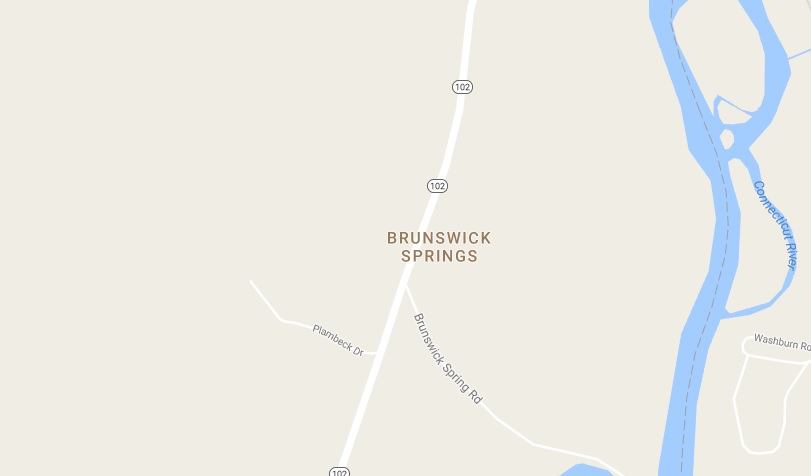
We finally found the old logging road we’d have to walk, and parked our car along the side of a completely deserted Route 102 – which I think is a contender for Vermont’s quietest highway.
We actually spent a few moments just sitting in the car, lazily getting our gear together and listening to the almost startling silence of no cars or humans for a good ten minutes or so, before climbing out of my friend’s Subaru and preparing ourselves for getting our boots soaked. I was told by someone who had managed to track them down that the location isn’t easy for a non-local to find. That was a pretty accurate statement.
We followed the path into the woods, our feet continuously stumbling through snowdrifts with a flimsy layer of ice glazing the surface. It was an unseasonable (and as I’d find out later, record-breaking) 64 degrees, and bright noonday sun was filtering through trees in hibernation.
Then, we saw something on the trail ahead of us. Curiously, we trudged forward to get a better look at the cryptic artifact in the snow, which turned out to be a decoratively stitched handmade bag filled with rose petals. It was an offering of some sort. That was a good sign. The Abenaki still revere the area as a sacred one, and often come here and leave gifts to honor the springs and the spirits that twist and turn through the trees, so I hoped that meant we were at least on the right path, in a literal sense of that metaphor.
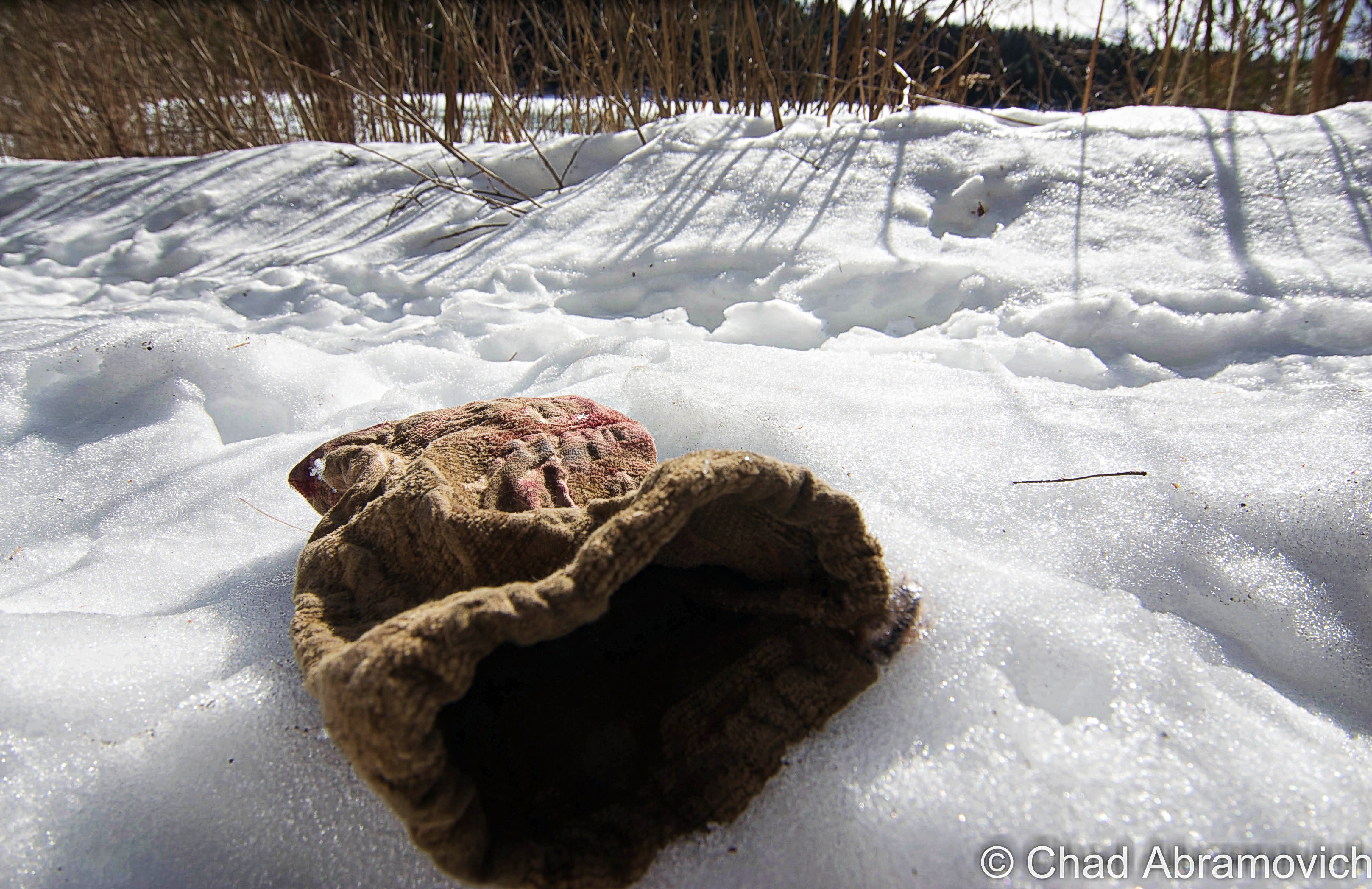
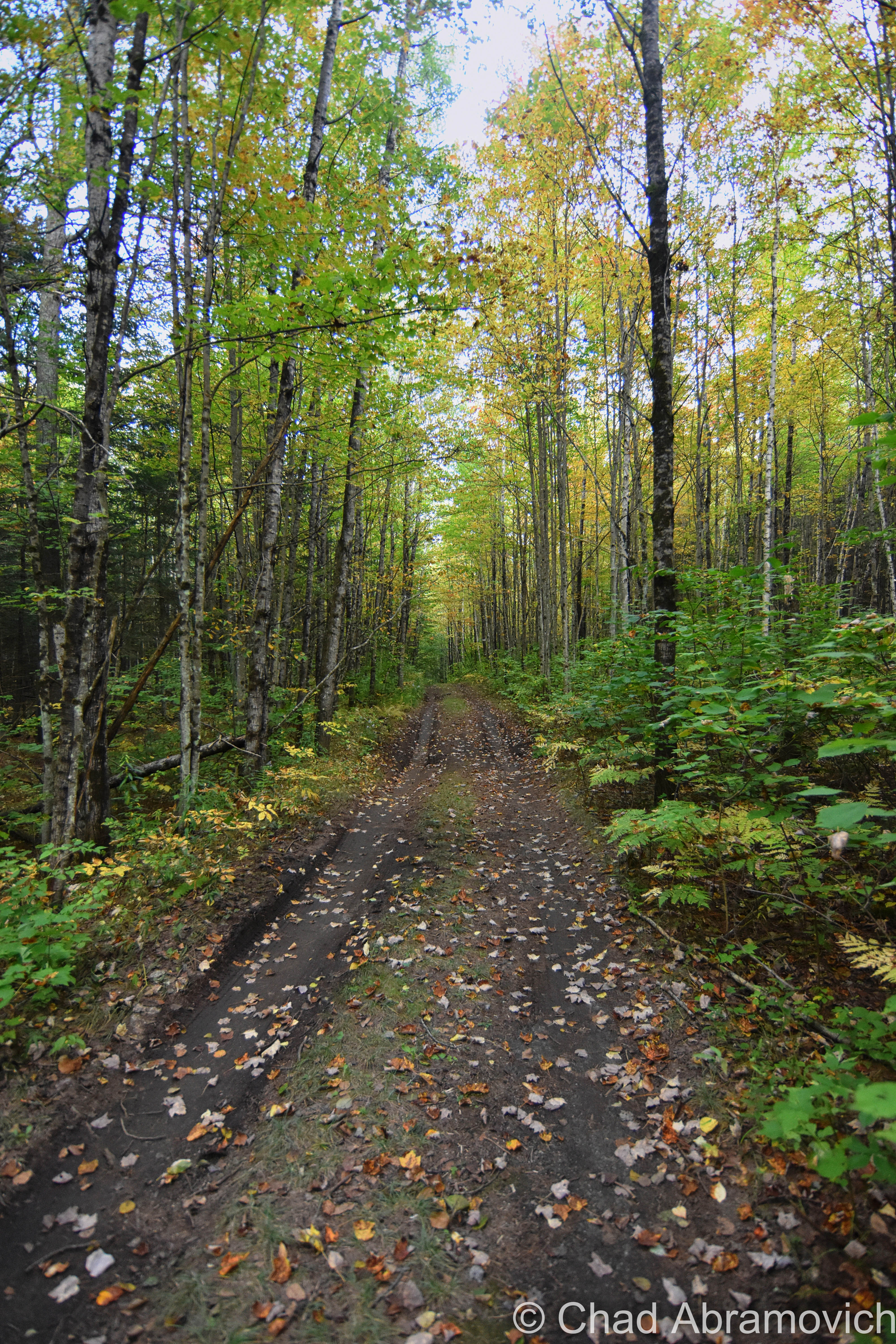
My hunch seemed to be correct when our path brought us skirting along Silver Lake. And then, to our right, I saw an unmissable worn concrete staircase leading down to the lakeshore. It was a fragment of the old hotel. We were close!
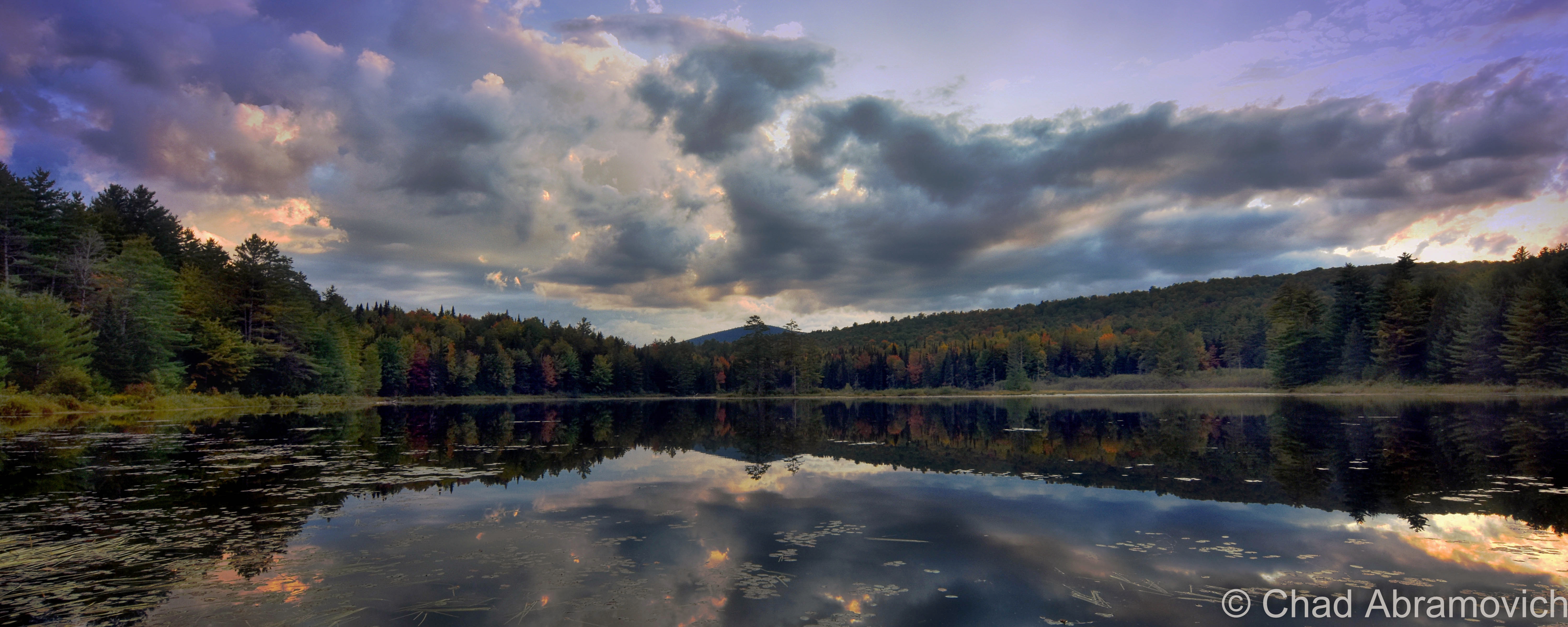
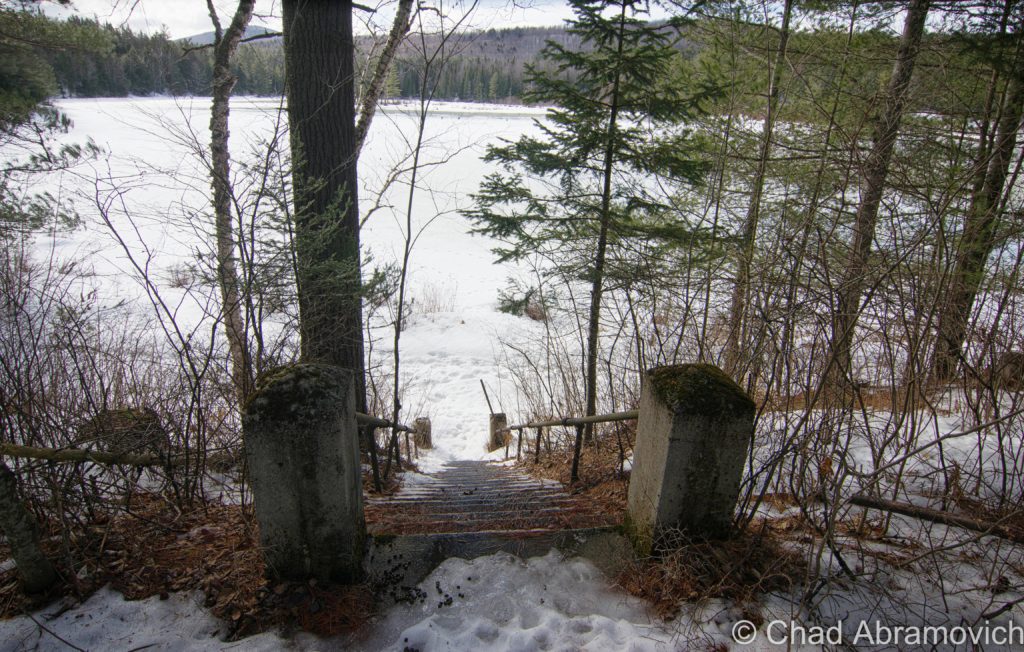
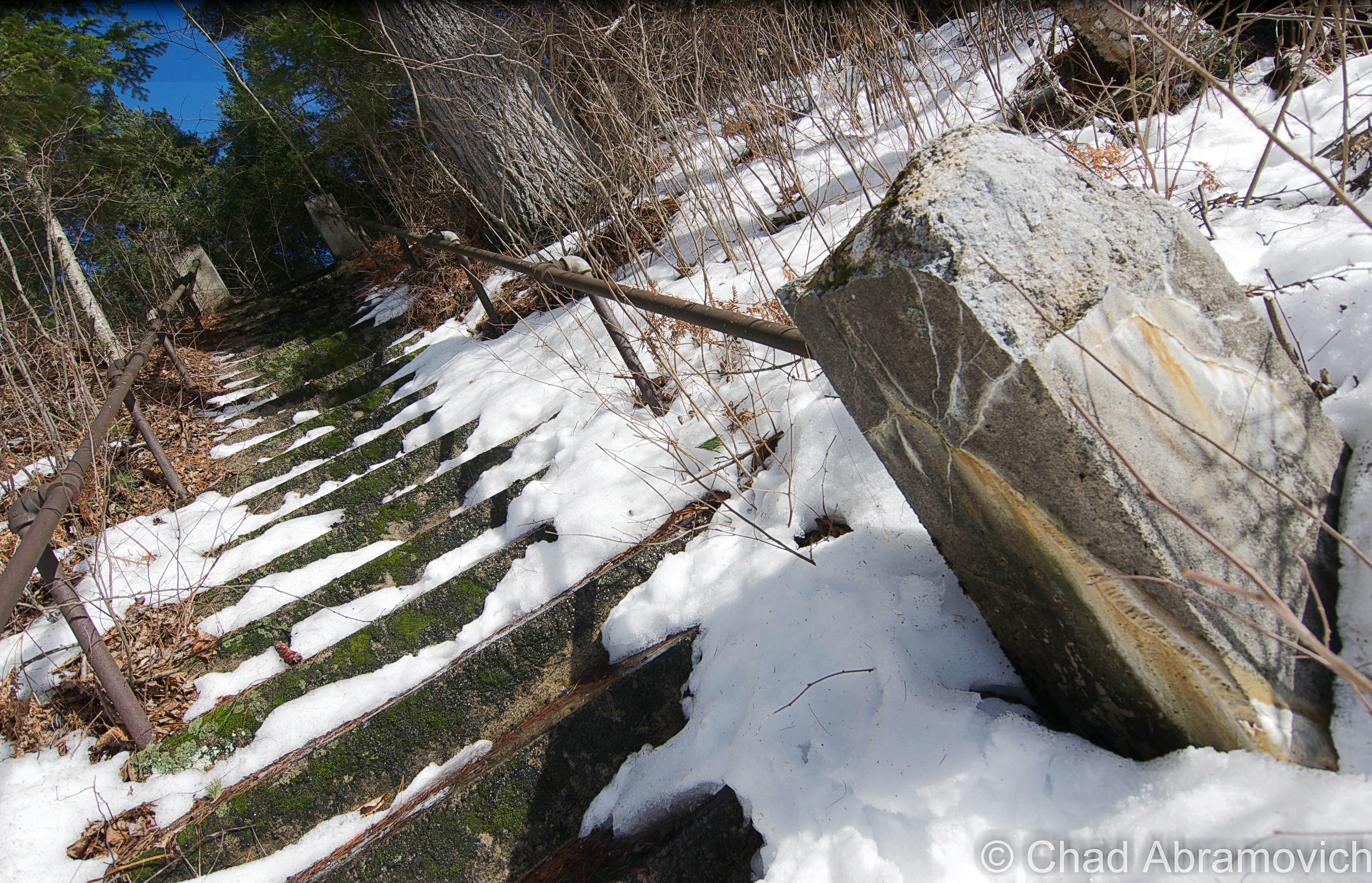
We walked a bit further, both of our spirits elevated at the discovery of the staircase. Then, we found more ancient ruins of the former business operations here. Another staircase plunging down a steeper pitch that the years had chipped away at, the ice-chunked waters of the Connecticut moving steadily southbound through the trees below. The smell of sulfur immediately overtook the formerly thin and sweet country air. We had made it!
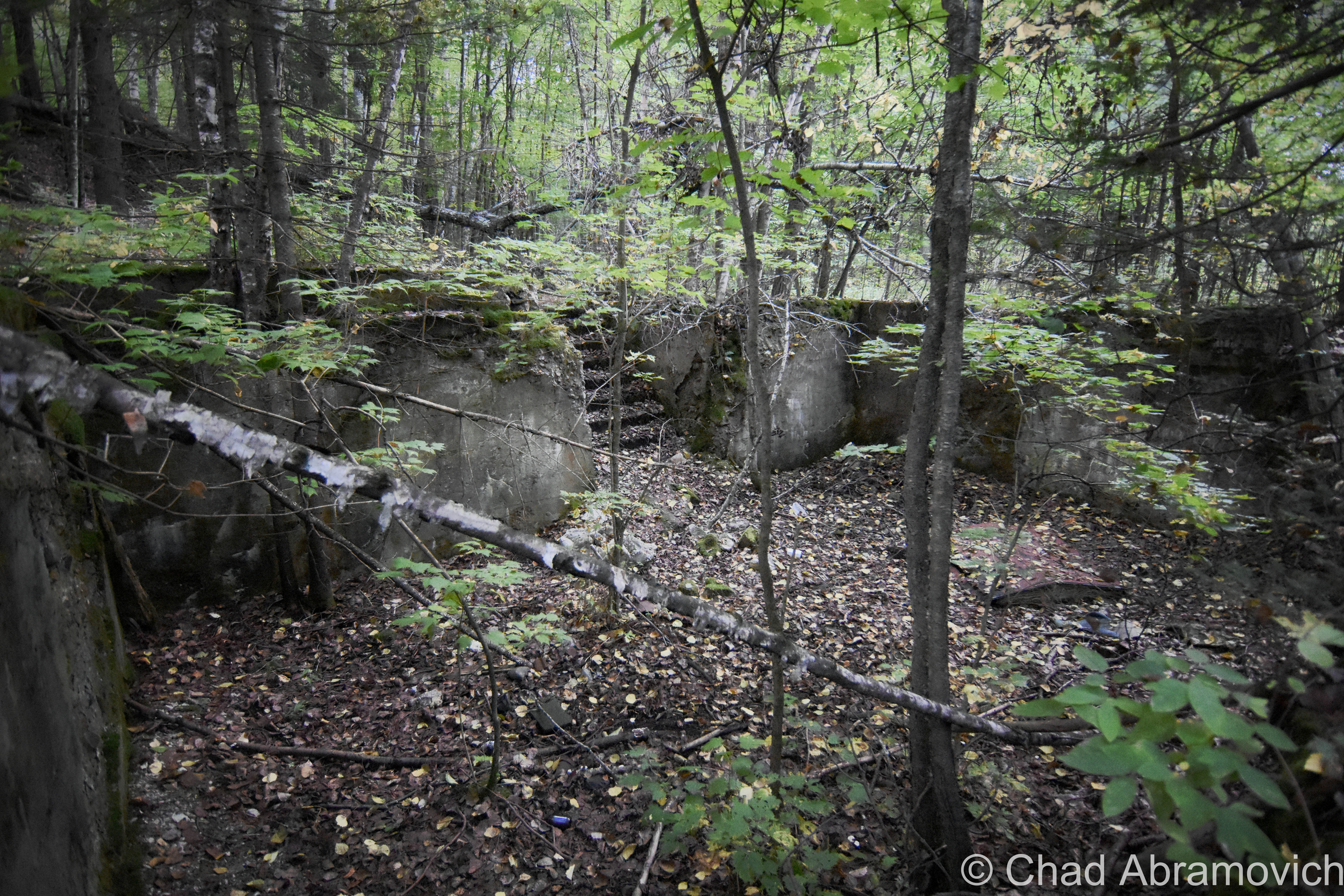
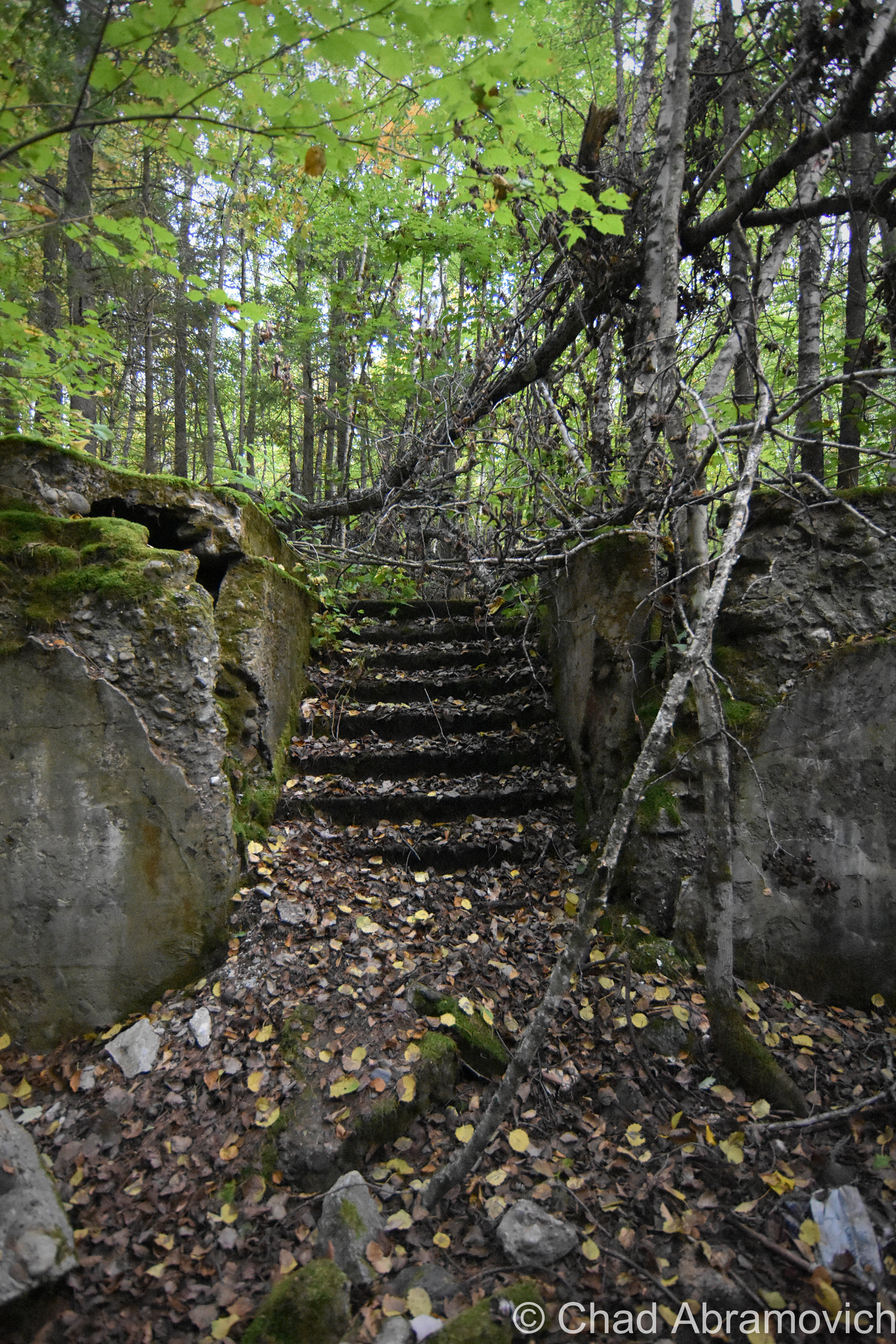
I stood at the crest of the drop for a few minutes observing my surroundings, before joking that the real adventure would be descending the stairs. Though it was in the 60s, it was still February, which meant the steps were slick with treacherous ice that could easily send you to the hospital after sending you down into the river. The hillside beside the stairs didn’t seem like a much better way to travel down.
Death gripping onto lead pipe hand railings, we scrambled down to a cement landing at the bottom. There, rusted pipes running horizontally underneath the walkway channeled water from a green dyed pool sunken into the hillside, filled with white stringy forms that looked like hair that swayed in the currents.
A huge block the size of a dishwasher from some part of the rubble detached itself and fell down the embankment, coming to rest when its weight buried a corner into the earth. Other visitors left several offerings and totems here, from candles, rose peddles (which may have come from the discarded bag we found earlier), dream catchers and miscellaneous trinkets such as beads, glass bottles, seashells and colorful ribbons ornamented around tree branches.
As you can see from the obvious difference in my photos, I’ve made a few trips here. On my sophomore trip, It was nearing dusk as I set out for a walk in the woods. The wonderful smell of dead leaves followed me down what was left of an old logging road into a forest that was so quiet and still, it was starting to creep under my skin.
Then, I saw the unmistakable ruins of an early 20th-century mineral springs hotel, now only a few foundations and stairs leading to nowhere. I had missed the cellar hole of Hutchin’s hotel on my first sojourn and wanted to scout those out.
I wandered around before the night hummed in, hoping I’d find some old glass bottles or buttons or maybe even a pocket watch – something long dropped by a guest now long turned into dust. Then I scrambled back down the banks to the springs and their sulfuric perfume.
But did I sample the waters? No, just to be safe. While it’s understandable to get inspired by the parables, the code of conduct here is definitely caveat emptor.
The silence was deep and unseen specters probably skulked amongst the trees – and all of the stories I harkened about this place being a stomping ground for continuing life of the supernatural kind and other possible unsettling encounters, came to life.
I hastened my pace and headed back to the car.
So, what can be said about all this? Who can say for sure? Can a specific string of words actually belabor unfortunate victims?
All I can reckon is that the magical springs at Brunswick continue to flow freely.
And just as the sorceress predicted; no one has had any luck in profiting from them.
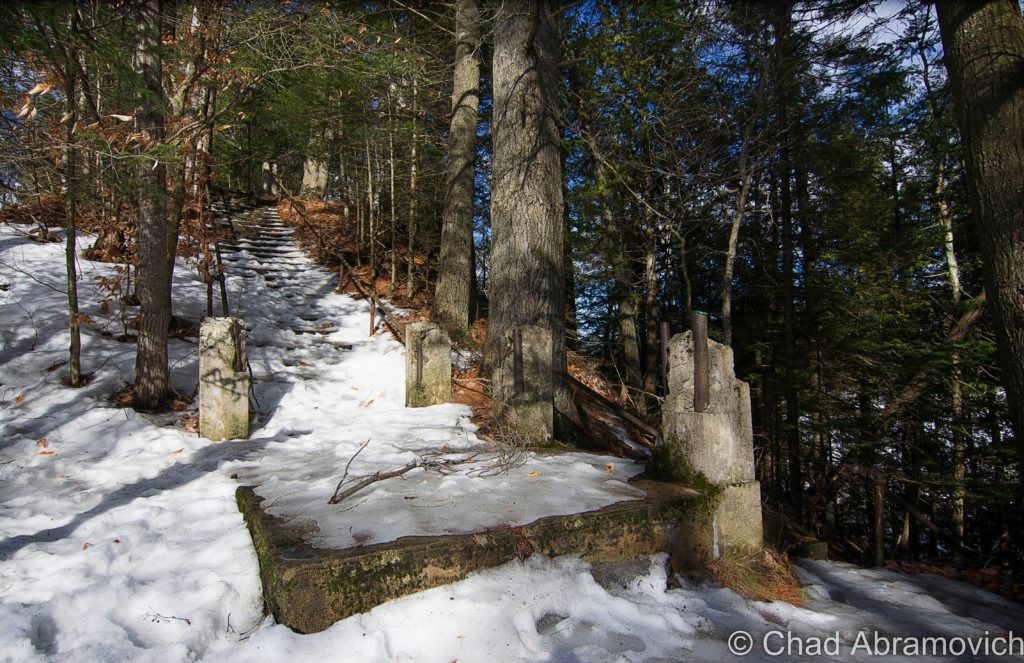
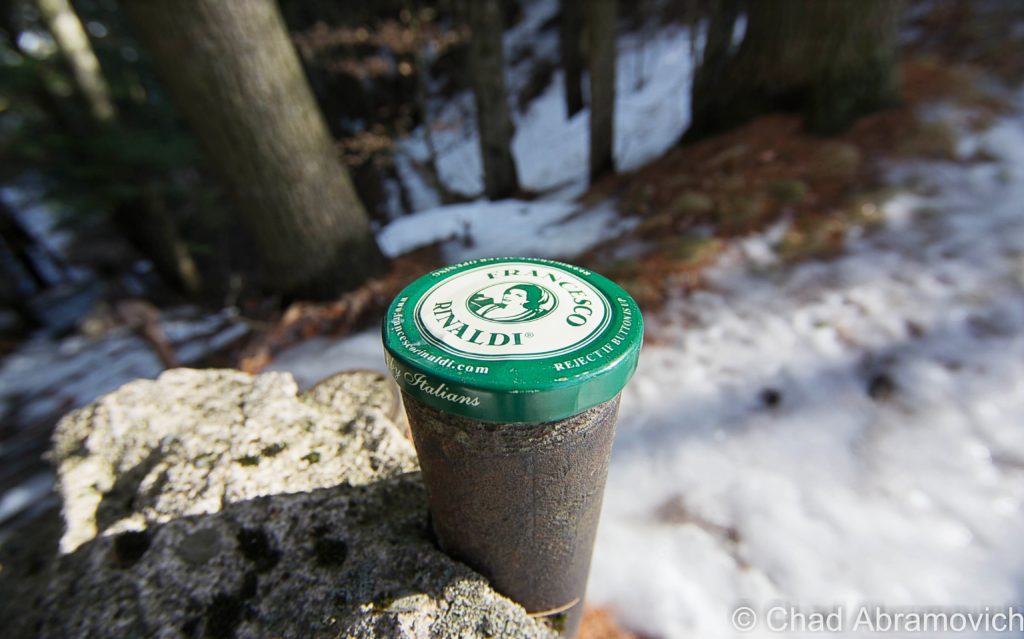

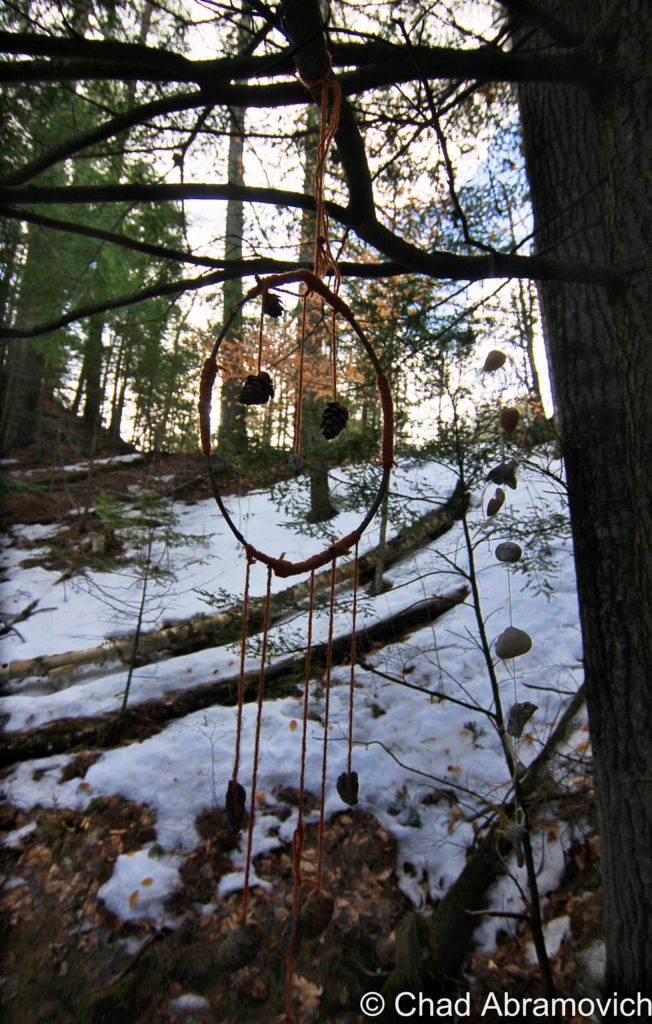

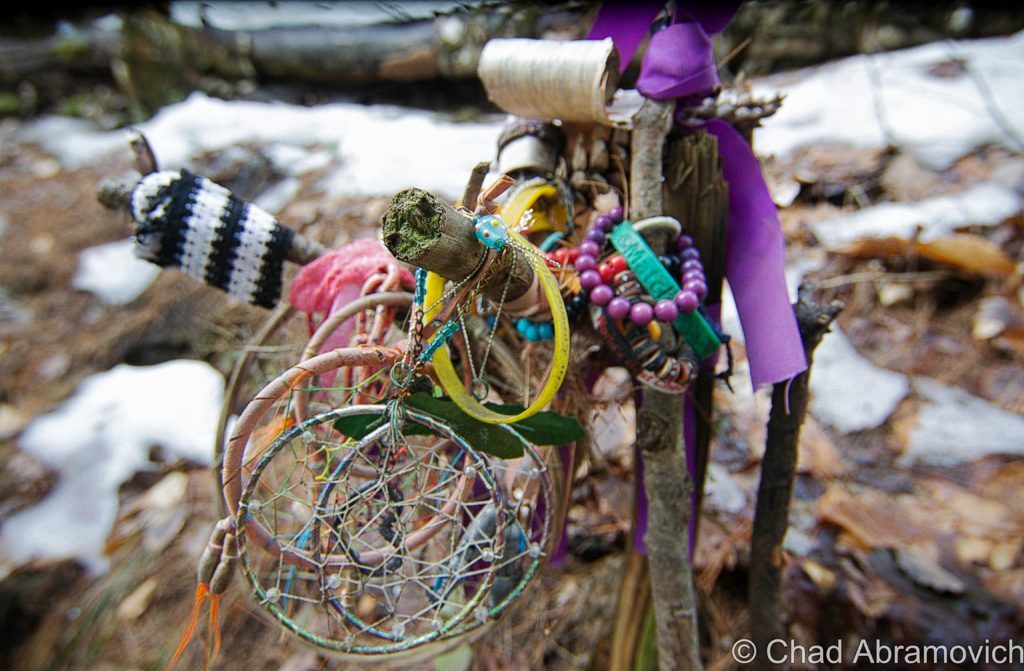
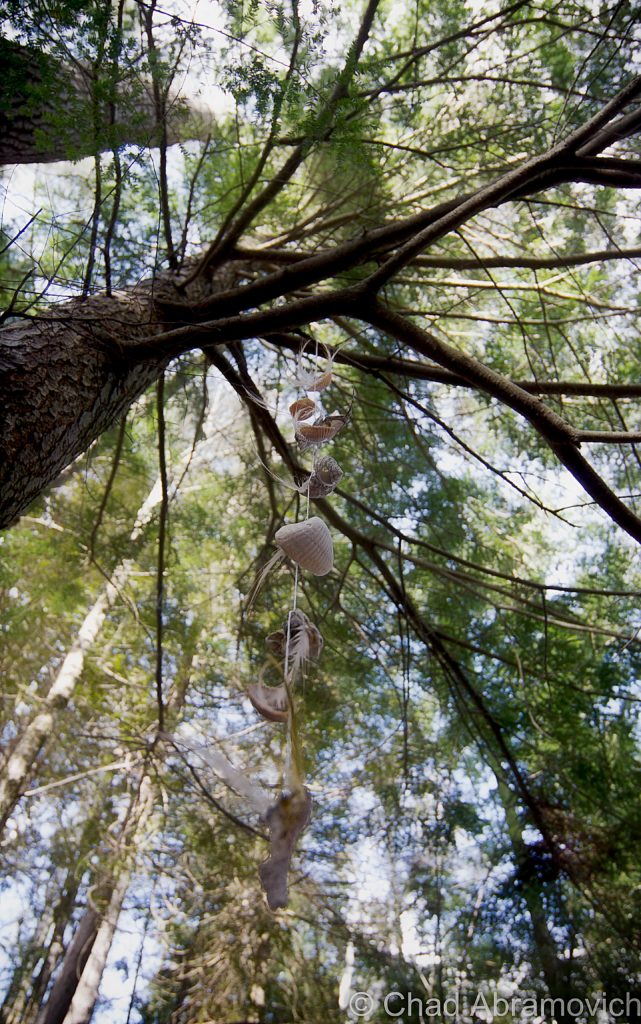
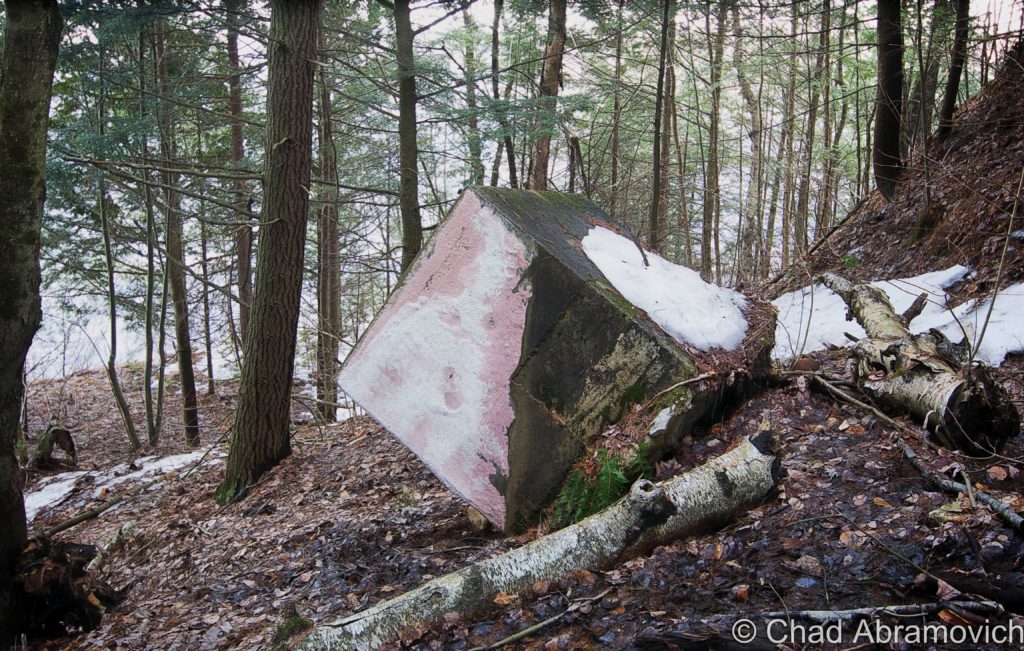

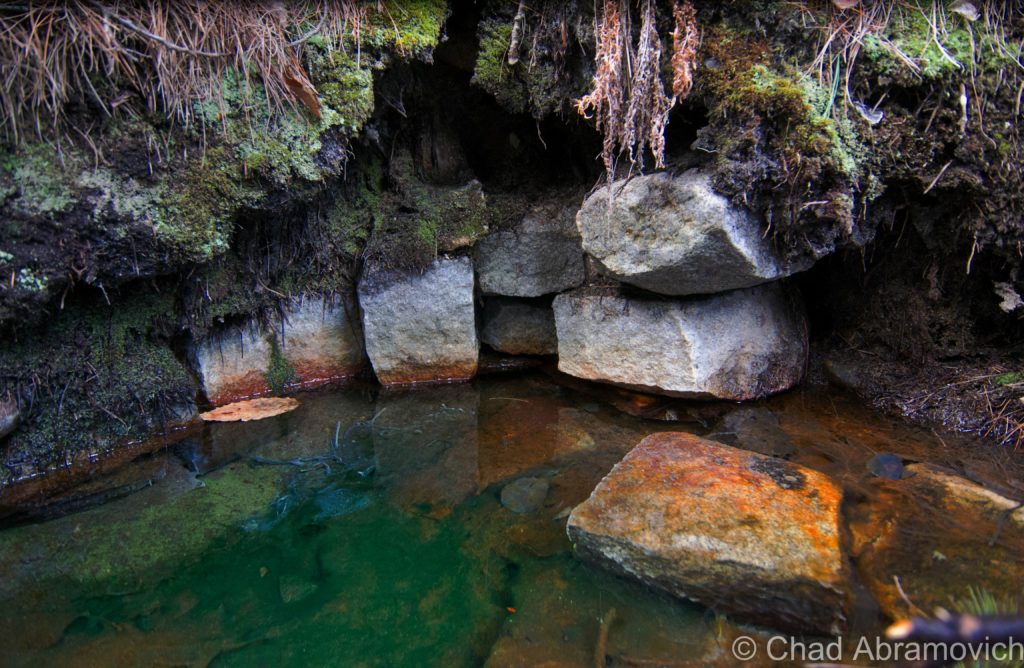
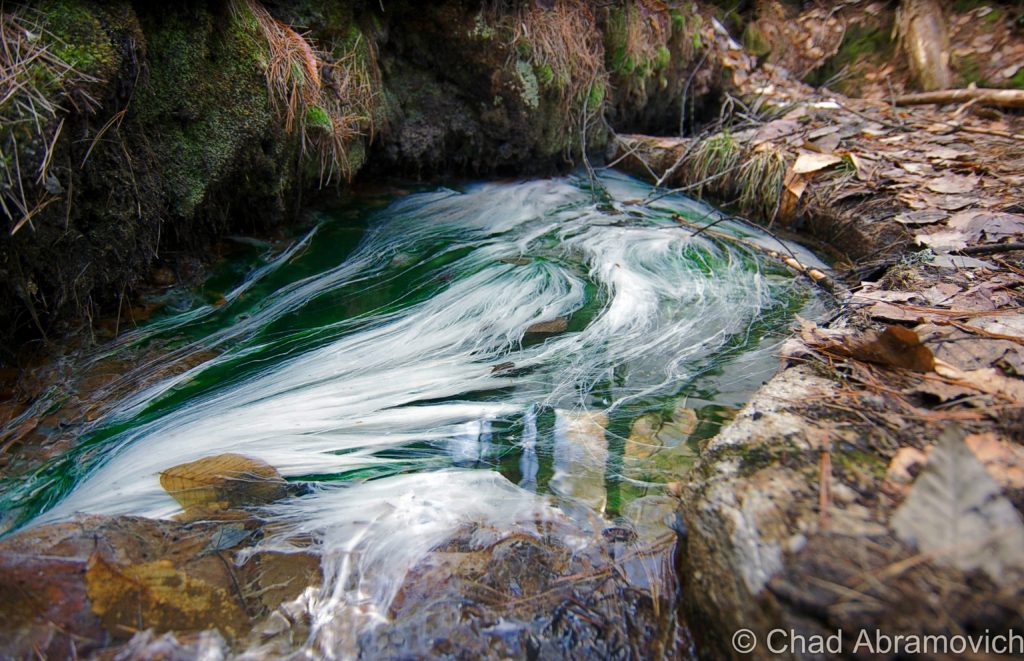
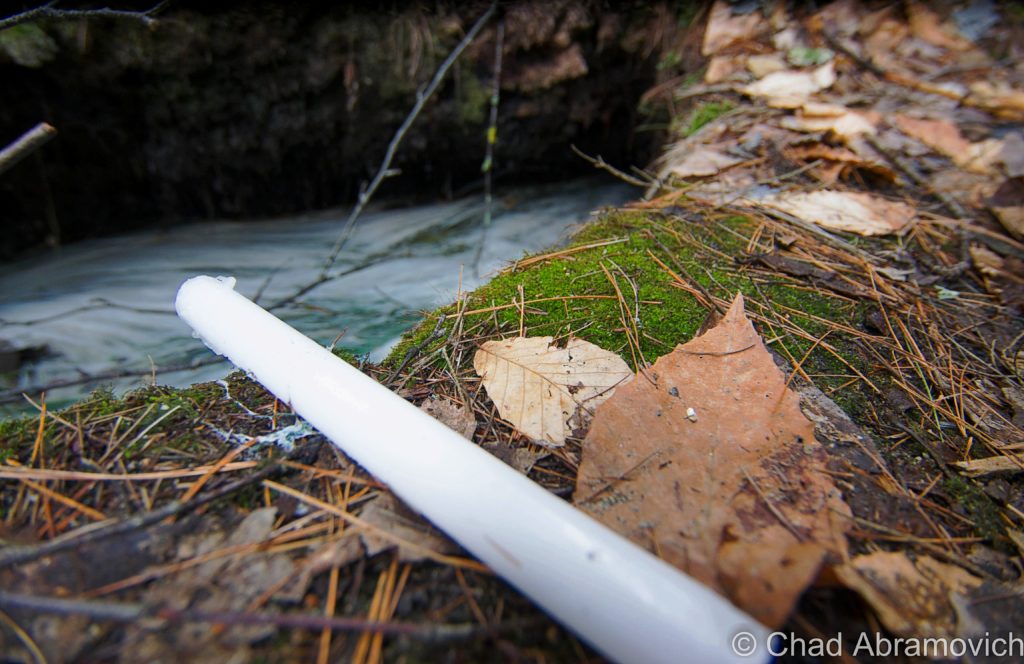
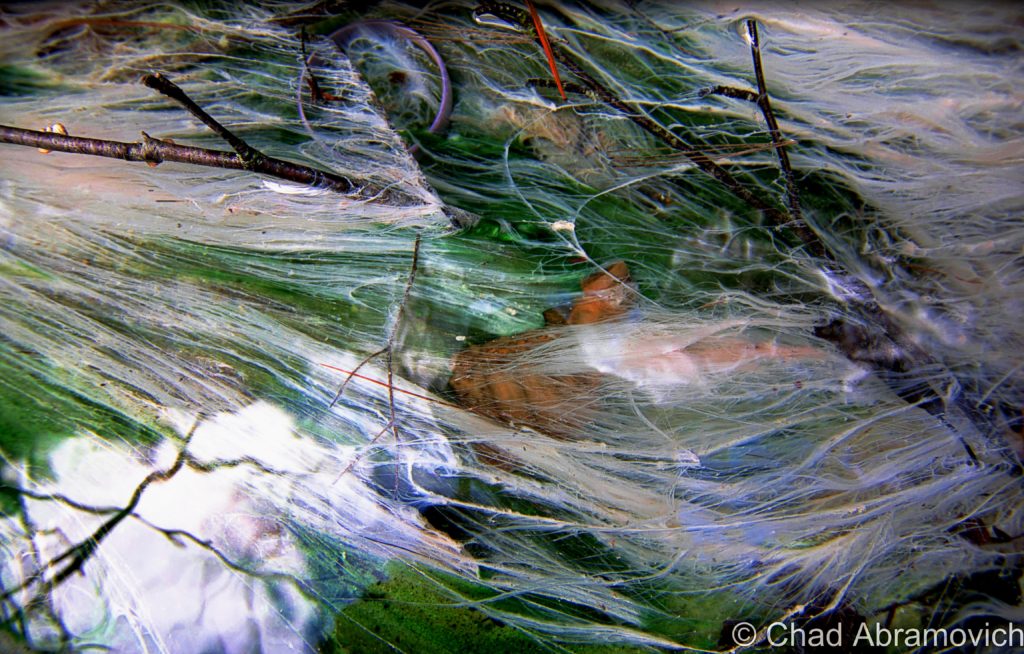
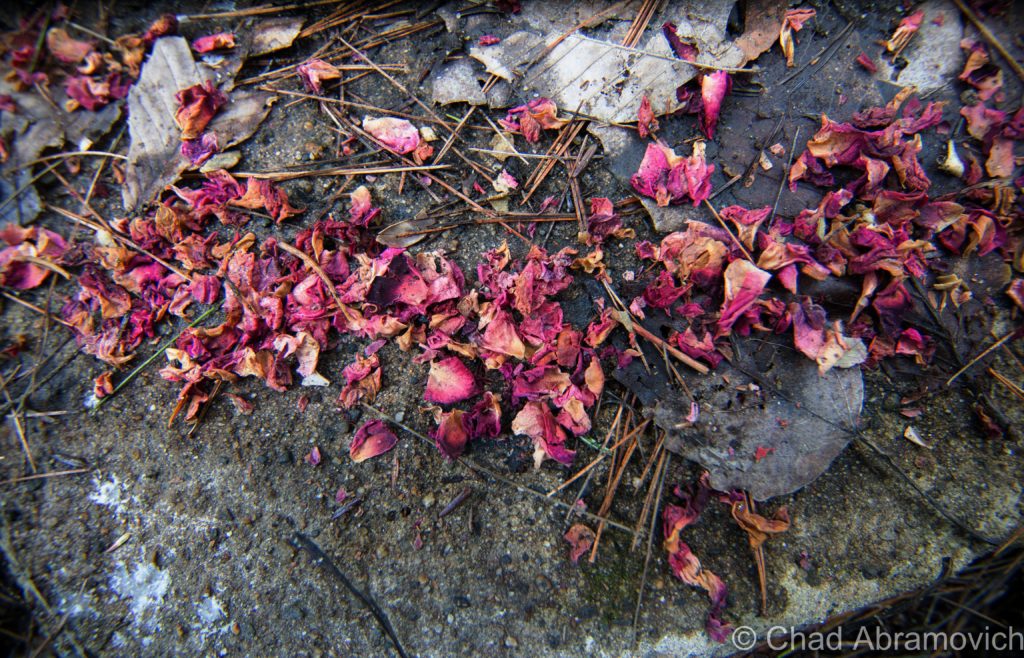
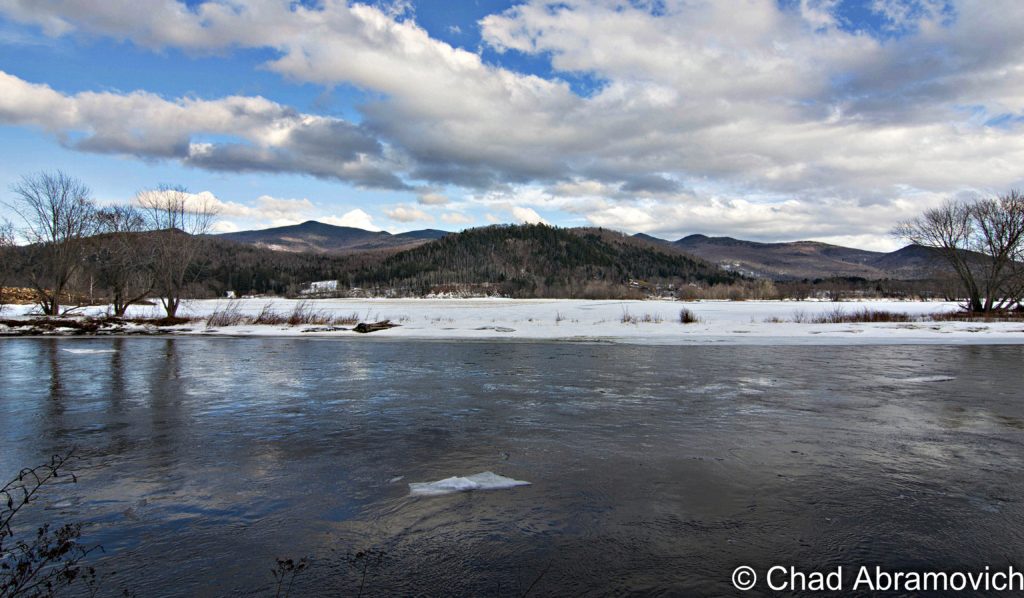
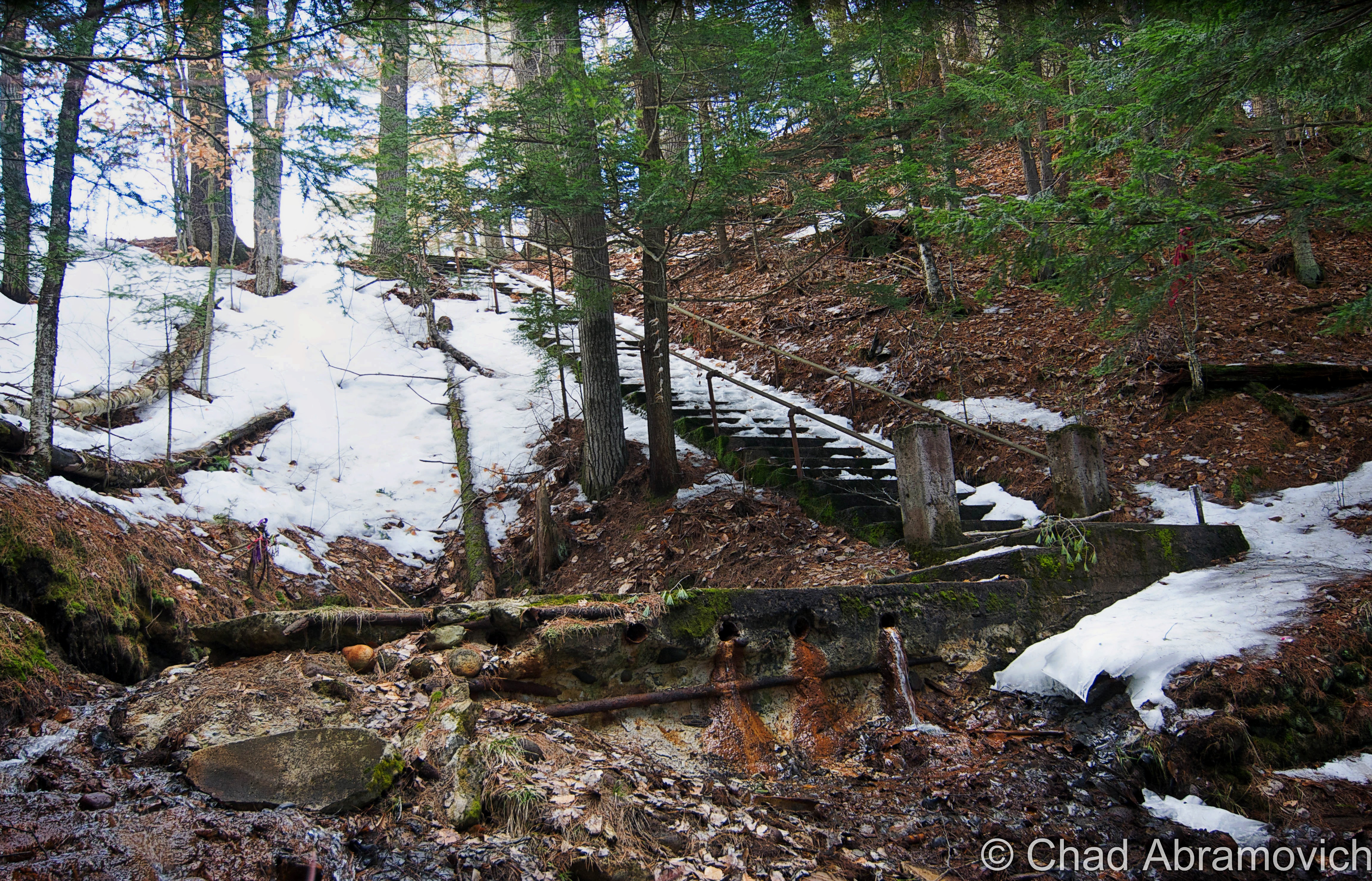
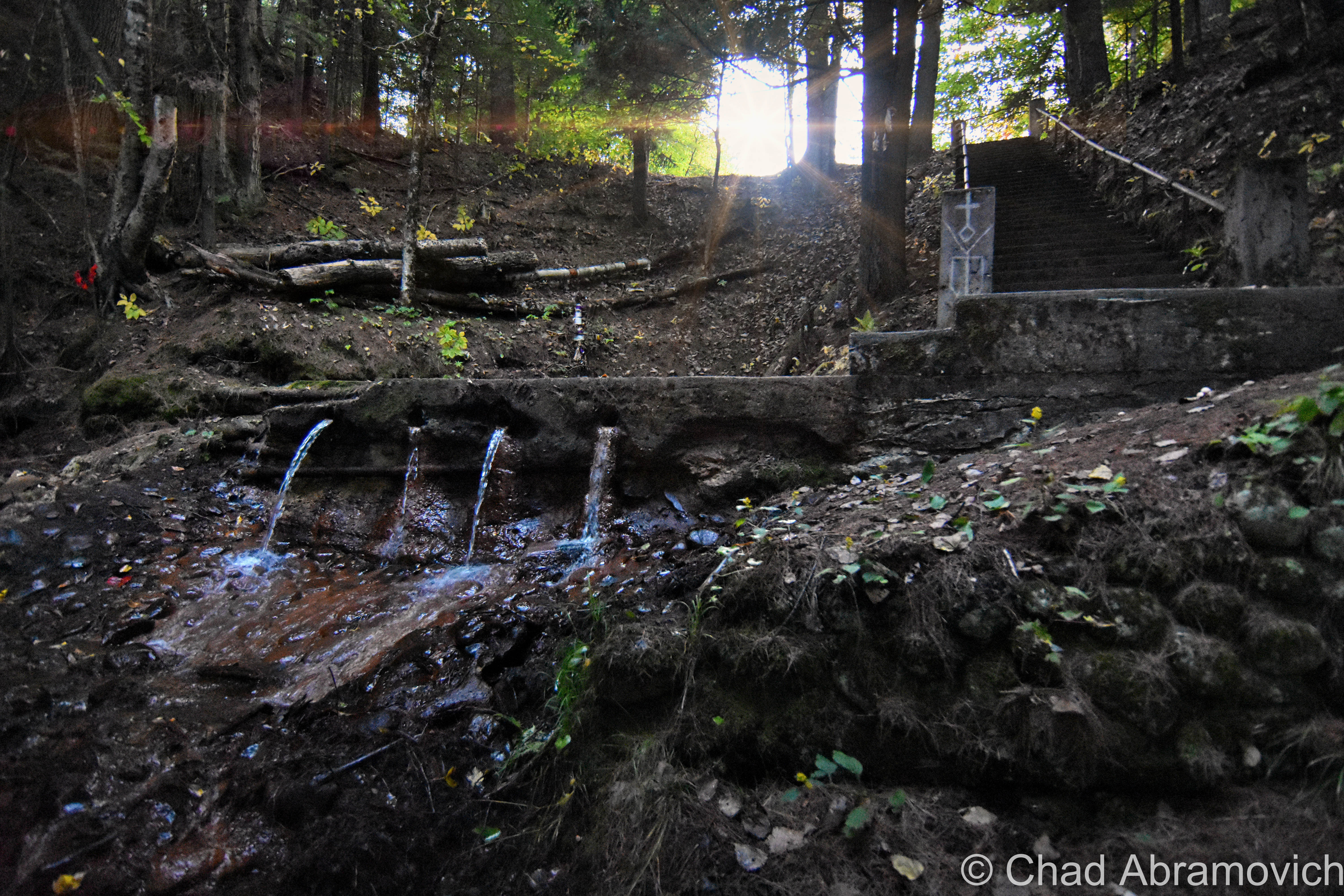
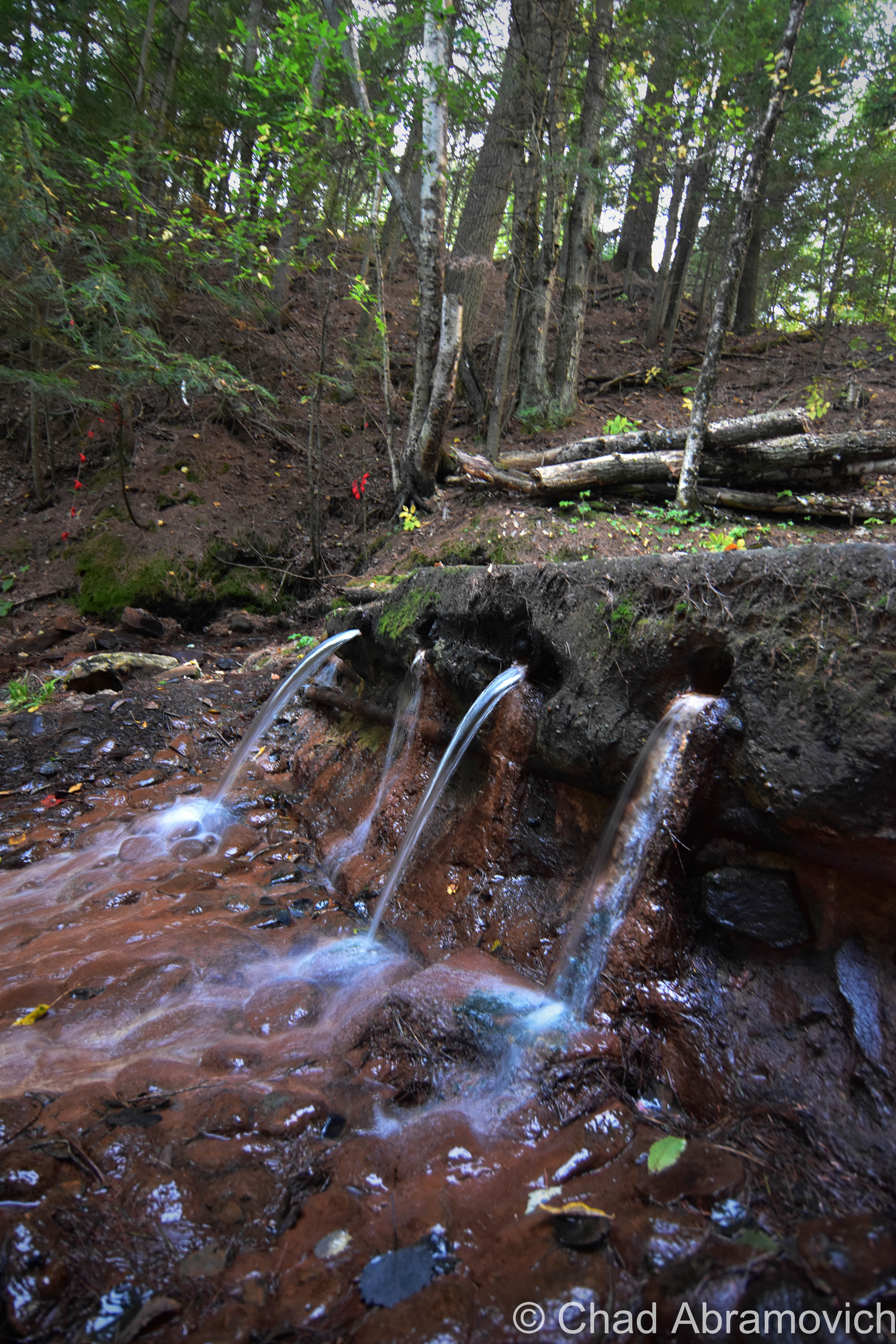
Since 2012, I’ve been seeking out venerable examples of Vermont weirdness, whether that be traveling around the state or taking to my internet connection and digging up forsaken places, oddities, esoterica, and unique natural features. And along the way, I’ve been sharing it with you on my website, Obscure Vermont. This is what keeps my spirit inspired.
I never expected Obscure Vermont to get as much appreciation and fanfare as it’s getting, and I’m truly grateful and humbled. Especially in recent years, where I’ve gained the opportunity to interact with and befriend more oddity lovers and outside the box thinkers around Vermont and New England. As Obscure Vermont has grown, I’ve been growing with it, and the developing attention is keeping me earnest and pushing me harder to be more introspective and going further into seeking out the strange.
I spend countless hours researching, writing, and traveling to keep this blog going. Obscure Vermont is funded almost entirely by generous donations. Expenses range from hosting fees to keep the blog live, investing in research materials, travel expenses and the required planning, and updating/maintaining vital tools such as my camera and my computer. I really pride and push myself to try to put out the best of what I’m able to create, and I gauge it by only posting stuff that I personally would want to see on the glow of my computer screen.
I want to continuously diversify how I write and the odd things I write about. Your patronage would greatly help me continue bringing you cool and unusual content and keep me doing what I love!


